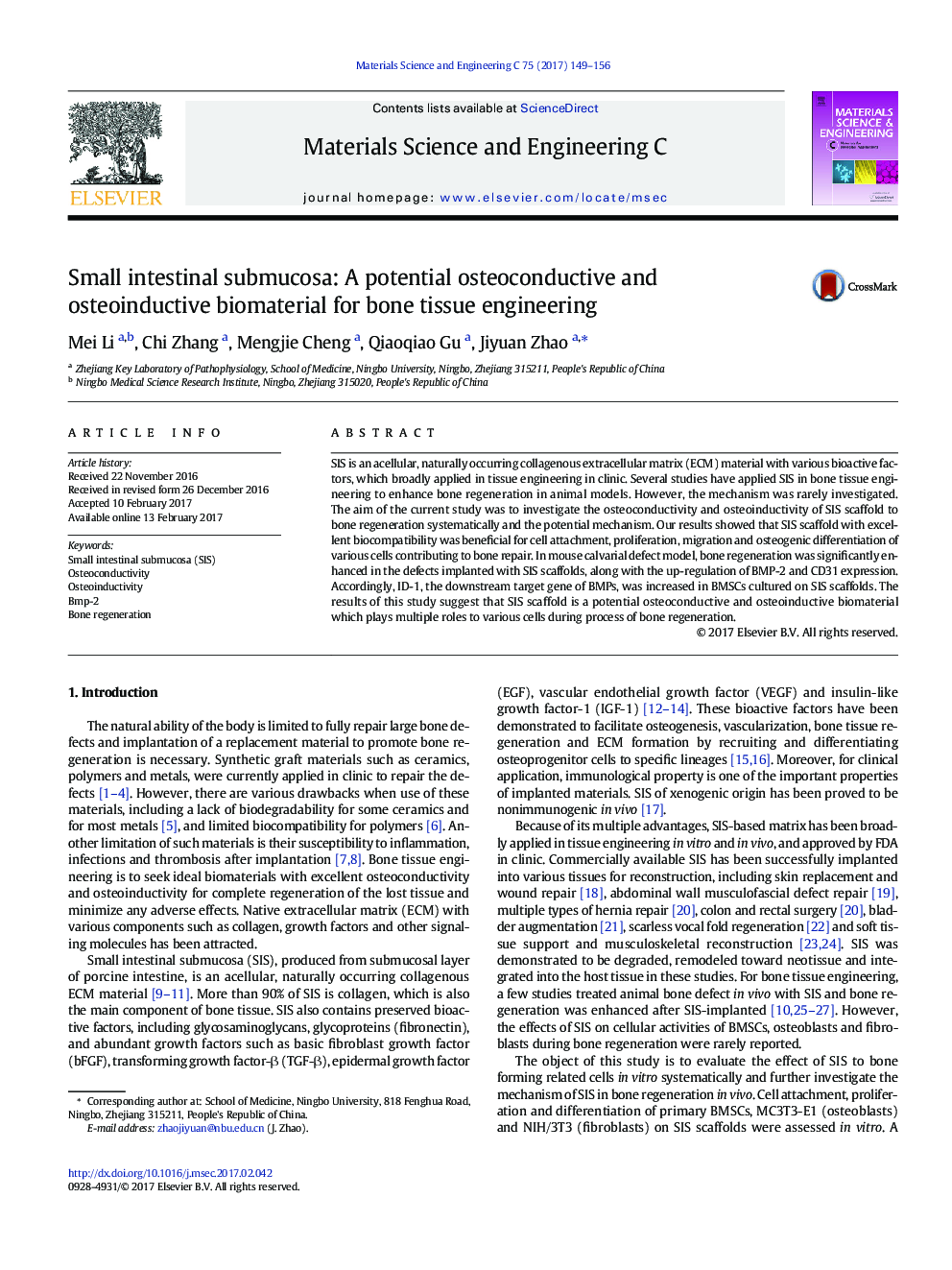| Article ID | Journal | Published Year | Pages | File Type |
|---|---|---|---|---|
| 5434812 | Materials Science and Engineering: C | 2017 | 8 Pages |
â¢SIS facilitates cell adhesion of BMSCs, osteoblasts and fibroblasts.â¢SIS promotes cell proliferation of osteoblasts and fibroblasts.â¢SIS promotes osteogenic differentiation of BMSCs and osteoblasts via BMP-2 pathway.â¢Synergistic effects of SIS to multiple cells enhance bone regeneration in vivo.
SIS is an acellular, naturally occurring collagenous extracellular matrix (ECM) material with various bioactive factors, which broadly applied in tissue engineering in clinic. Several studies have applied SIS in bone tissue engineering to enhance bone regeneration in animal models. However, the mechanism was rarely investigated. The aim of the current study was to investigate the osteoconductivity and osteoinductivity of SIS scaffold to bone regeneration systematically and the potential mechanism. Our results showed that SIS scaffold with excellent biocompatibility was beneficial for cell attachment, proliferation, migration and osteogenic differentiation of various cells contributing to bone repair. In mouse calvarial defect model, bone regeneration was significantly enhanced in the defects implanted with SIS scaffolds, along with the up-regulation of BMP-2 and CD31 expression. Accordingly, ID-1, the downstream target gene of BMPs, was increased in BMSCs cultured on SIS scaffolds. The results of this study suggest that SIS scaffold is a potential osteoconductive and osteoinductive biomaterial which plays multiple roles to various cells during process of bone regeneration.
Graphical abstractDownload high-res image (81KB)Download full-size image
